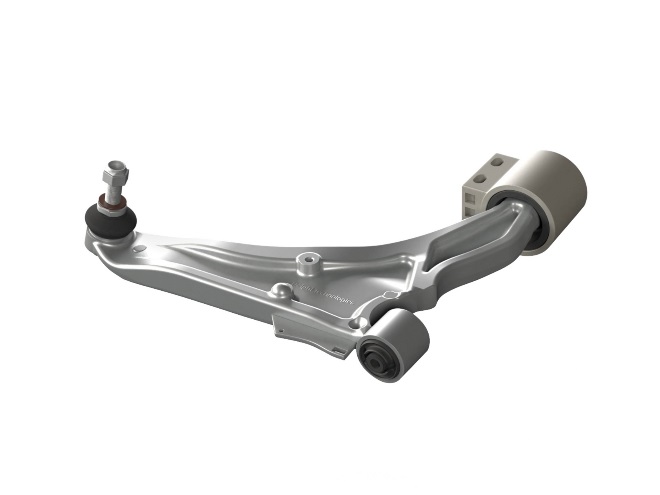Resource Highlights
What do sway bar links do
Sway bar links, also known as stabilizer bar links, help prevent excessive leaning during turns and keep the vehicle stable by linking the sway bar, also known as the stabilizer or anti-roll bar, to the suspension components. They connect the vehicle's left and right wheels through short links, reducing body roll while cornering, and absorbing shocks from potholes and uneven road surfaces. A damaged or failed sway bar link can cause unnecessary stress to other suspension parts on the vehicle and to the comfort of the driver and passengers.
How to know when to replace sway bar links
The first step is for a technician to go on a road test with the customer driving to hear what the customer hears. Listen for any knocking, popping, or clunking noises. After putting the vehicle on a lift, hold the sway bar link and move it up and down and side to side to test for any looseness or “play” in movement, which are sure signs that the part needs to be replaced. You can use this opportunity to inspect the sway bar bushings, sway bar link bushings, and ball joints for any wear or damage while under the vehicle. Be sure to test both sides of the suspension, and even if the other side has no issues, it is best practice to replace steering components in pairs.
How to replace a sway bar link
Safety first
- Make sure to be thorough and careful during steering and suspension repairs.
- Wear safety glasses and gloves.
- Use approved jack stands and make sure to support steering components against their spring pressure.
- If you need to use heat to loosen a stubborn nut, an electrically inductive heating kid is recommended as the safest method.
- If you use a torch, make sure to have a fire extinguisher on hand and avoid catching rubber bushings on fire.
Tools you will need
- Impact wrench
- Torque wrench
- Allen wrench (6-point standard but can vary)
- 8 mm wrench
- Pliers (battery for narrow-jaw channel locks)
- Penetrant oil
Before you start
- Make sure your product says penetrant oil, not silicone, lube or water dispersant.
- Measure the ride height before the service.
- Removing the wheel is recommended for better access.
- Before installing a part, make sure old and new parts match dimensions.
Disconnect the sway bar links
The first step is to disconnect the sway bar link from the sway bar and the control arm. Some vehicles have specialized tools to hold the stud that is connecting the sway bar link to the suspension system, as seen in the video. With the stud secure with a locked ratchet, use an 8mm wrench to loosen and remove the nut. Do this to the top and bottom of the link, and once both nuts are removed, remove the sway bar link. Be sure to compare the old sway bar link with the new part to ensure it is the correct dimensions.
Install the new sway bar links
To install the new sway bar link, use an Allen wrench to hold the stud on the end of the sway bar link while adding the new lock nut. Do not reuse lock nuts. Using the wrench, install the new lock nut, making sure to wrench it the whole way. You may need to compress the suspension to get the nuts in the correct position. With the sway bar link in position, put the nut on using your hand. Once the nut reaches the lock nut, wrench the nut tight to the vehicle manufacturer recommended torque values, changing wrenches as needed to fit the new sway bar link nut.
Final inspection
With the new sway bar link installed, replace the tire and lower the vehicle to the ground. Always make sure to torque the wheel on the ground before going for a test drive. An important thing to remember when doing anything with suspension is to measure the ride height before and after the service to compare. Any drastic difference might be an indicator that something went wrong with the install and should be examined before going on a test drive. Luckily, with a new sway bar link, there is no need for an alignment and the vehicle is ready to drive immediately.
When deciding what sway bar link is best for your vehicle, consider Delphi sway bar links as your OE standard replacement. All sway bar links have a cataphoretic coating for superior rust protection and have a sealed, high-grade rubber boot to help deliver a safe and comfortable ride, time and time again
Check out our catalog to see if we have a Delphi sway bar link for your vehicle today.









